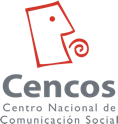Media
With the analysis of 42 influential media outlets (8 TV channels, 11 radio stations, 13 online and 10 printed media), the project MOM Mexico identified 10 families that control the news contents consumed by most Mexicans. Most of their businesses are active in different media sectors (TV, radio, printed press online) and other industries, such as construction, mining, financial services and casinos.
Grupo Televisa runs two free-to-air television channels (Las Estrellas and Foro TV), one radio station (W Radio) and one website (televisa.com); Grupo Salinas operates the television channels Azteca Uno and ADN 40; the third competitor in the free-to-air television sector is Imagen TV which also controls Imagen Radio, the website excelsior.com and the daily newspaper Excélsior. Milenio is a cross-media brand and business, including the cable TV channel Milenio TV, the website milenio.com and the newspaper Milenio.
The two radio broadcasters with the largest national audience (Radio Fórmula and Radio Centro) are also part of the media elite, as it is the case with the daily newspapers El Universal and Reforma in their legendary print and current digital versions. MVS has a strong presence in the radio but also in the cable television sector. One very strong multimedia group with regional influence is Organización Editorial Mexicana – owner of networks of newspapers and radio stations. UNOtv is an interesting media outlet for being relatively new and because of its high online presence.
As opposed to other Latin American countries whose media elites emerged from 20th century dictatorships and authoritarian regimes, in Mexico the media magnates appeared on the stage and grew during the hegemony of the political party Partido Revolucionario Institucional (PRI) which was in power uninterruptedly from 1929 until 2000. Although elections took place during this period of 71 years of continuous rule, the Peruvian writer Mario Vargas Llosa summarized the feeling of many when calling it a “perfect dictatorship”.
The wealth of the owners of the dominant media groups originates in the past century, although some of them entered or increased their stakes in the media sector in the last 20 years. Such is the case with Grupo Imagen (Excélsior), Grupo Multimedios (Milenio) and Grupo América Móvil (UNOtv).
As no reliable data on media consumption exists in Mexico, the MOM team compared available information from academic studies and observations from experts in the field. The selection of media outlets for this sample was determined by their influence in setting the informative agenda and with that, their power in shaping the public opinion.







